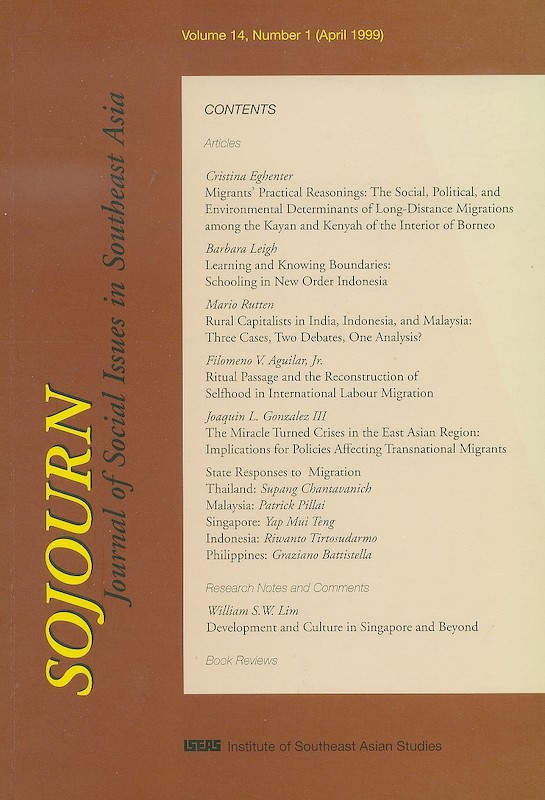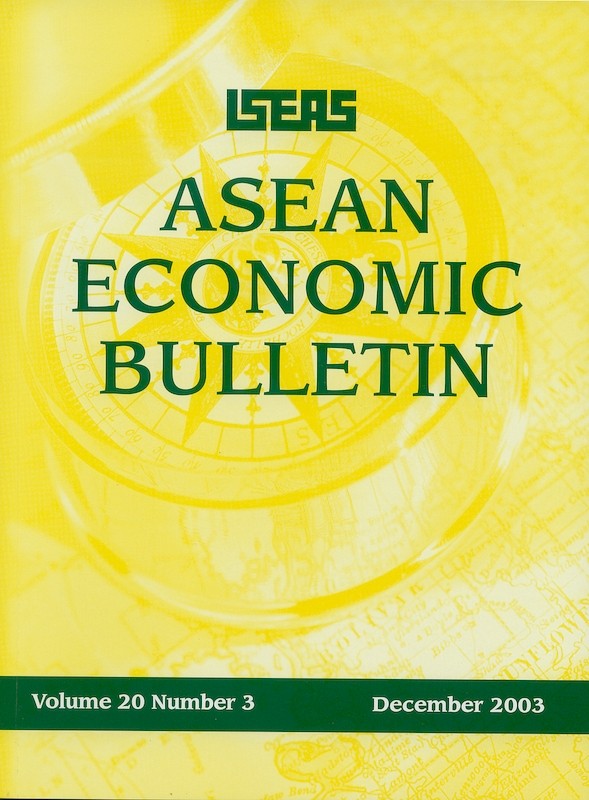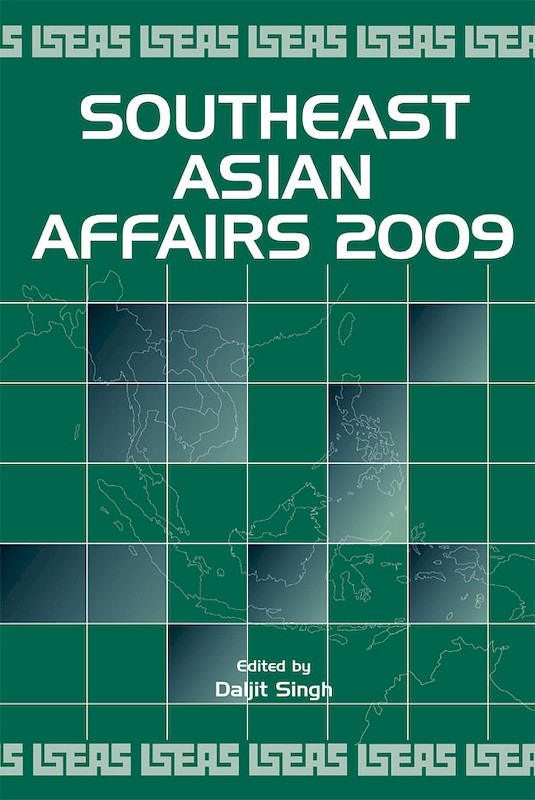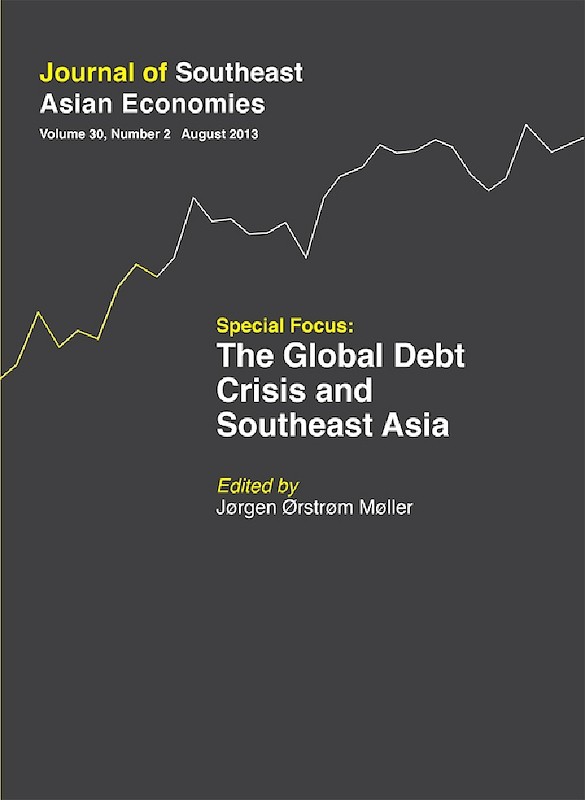ASEAN Economic Bulletin Vol. 27/1 (Apr 2010). Special Focus on "The Global Financial Crisis and Asian Economies: Impacts and Trade Policy Responses"

Date of publication:
May 2010
Publisher:
Institute of Southeast Asian Studies
Number of pages:
157
Code:
AE27/1
Contents
-
ASEAN Economic Bulletin Vol. 27/1 (Apr 2010). Special Focus on "The Global Financial Crisis and Asian Economies: Impacts and Trade Policy Responses"
[Whole Publication] -
Preliminary pages
- ARTICLES
-
The Global Financial Crisis and Asian Economies: Impacts and Trade Policy Responses, by Prema-Chandra Athukorala, Aekapol Chongvilaivan, authors see abstractThe Southeast Asian economies have entered their worst post-1997 recession in the aftermath of the global financial crisis. The region is now in dire need of appropriate policy tools that put in place immunity to the ripple effects and a full momentum of an economic recovery. This article aims to highlight the key inquiries into the impacts of and responses to the global economic meltdown, which are widely debatable among policy-makers and academics, yet remain unanswered in the literature. It sets the context for the ensuing contribution to this special issue.
-
Southeast Asia's Policy Response to the Global Economic Crisis, by David Jay Green, author see abstractThis paper examines the impact of the global financial crisis on Southeast Asia, focusing especially on the policy responses of the various governments. In spite of seeing OECD asset markets crumble and financial credit freeze, Southeast Asia was slow to fully mobilize to reduce the impact of the crisis. Monetary policy-makers did rise to the challenge, but the tools of fiscal expenditure were slow to be used. The impact of fiscal policy was too late to stimulate domestic demand and mitigate the impact on the poor. This review of policy responses could yield policy lessons for sustaining growth and cushioning the poor in the face of future crises. The discussion is on the larger, more populous and more globalized countries of Southeast Asia: Indonesia, Malaysia, the Philippines, Singapore, Thailand, and Vietnam. These countries have the resources to address the impact of the global economy through individual and collective actions and policies.
-
Capital Mobility in Developing Asia: How Does It Respond to the Financial Crises?, by Juthathip Jongwanich, author see abstractThis paper examines movements of capital flows in developing Asia, with an emphasis on their responses to the Asian and global financial crises. The determinants of capital flows are then further examined. Portfolio investment and bank loans (both inflows and outflows) are more prone to the financial crises than foreign direct investment. The determinant analysis shows that economic prospects of G3 countries are crucial in affecting movements of portfolio investment and bank loans. It is, therefore, not surprising that the recent global economic slowdown from the G3 markets resulted in the significant pullbacks of short-term capital. However, strong economic fundamentals, especially financial institutions, in the region help most of developing Asia to successfully redress and manage most of the adverse effects. The complementarity between capital flows and saving in the region is also found in the analysis, which may shed light on problems of efficient use of saving within the region. Shifting the composition of capital flows to longer-term capitals and further developing financial markets are two key policy inferences that can be drawn from the study.
-
Should Exports Be Globally Diversified or Regionally Integrated? Evidence from ASEAN+3 Experience, by Nongnuch Tantisantiwong, author see abstractThe global financial crisis seems to have had no significant direct effect on the financial sectors in Asian countries other than in Hong Kong, Japan, and Singapore, where financial sectors are globally integrated. However, significant indirect effects have worked through contraction in Asian exports. This paper examines whether diversification of export markets with a greater intra-regional bias would succeed in mitigating the effect of the global economic contraction on the Asian economies. There is evidence that economic cooperation among the ASEAN+3 countries has enhanced regional trade. However, there is no evidence to suggest that intra-regional trade integration act as a cushion against export contraction emanating from a global economic downturn. The upshot is that export rebalancing policy should focus on diversifying exports globally rather than aiming to achieve greater regional integration.
-
The Indonesian Economy amidst the Global Crisis: Good Policy and Good Luck, by M Chatib Basri, Sjamsu Rahardja, authors see abstractThe global economic crisis has caused economic collapse in many countries. Indonesia is obviously affected by this crisis, its export growth declined significantly. Nevertheless, the impact of the crisis on the Indonesian economy is relatively limited compared to other countries in the region, including Singapore, Malaysia and Thailand. This situation leads into a question of why the impact of the global crisis on the Indonesian economy is relatively limited so far. Is it because of the structure of Indonesia's trade or the effectiveness of Indonesia's fiscal policy and monetary response? This paper argues that there are at least two reasons why Indonesia's performance was relatively good. Firstly, it was due to the appropriate policy responses both from Bank Indonesia and the Indonesian government. Secondly, Indonesia's relatively small export share to GDP saved the country from the global financial crisis. This was more a case of good luck than deliberately planned economic policy strategy. Nevertheless, this paper indicates that exports are a source of Indonesia's economic growth. Exports have a large effect in supporting economic growth, albeit less stable compared to domestic demand. Because of this, a strategy safeguarding a balance between domestic economy and global orientation, such as becoming a part of a production network and promoting export-oriented growth, must be a part of the development strategy of the national economy.
-
Global Recession, Labour Market Adjustment and International Production Networks: Evidence from the Thai Automotive Industry, by Archanun Kohpaiboon, Pisut Kulthanavit, Prasert Vijitnopparat, Nongnuch Soonthornchawakan, authors see abstractThis paper examines how workers in international production networks adjust to the recent global recession, using the Thai automotive industry as a case study. The paper's methodology involves comprehensive interviews with managers and workers in the industry conducted between July and September 2009. It was found that the magnitude of output contraction was far greater than that of employment contraction, reflecting the high degree of skilled labour intensity of production and the efforts of enterprises to avoid retrenchment of trained workers. Employment adjustment has mainly taken the form of reducing working hours rather than retrenchment. This seems to have adversely affected skill upgrading and the workers' earnings. In response to the contraction in urban wage premium, some workers have returned to their hometown in rural areas. There is evidence that the agricultural sector and local community oriented business facilitate labour market adjustment by absorbing retrenched workers. The findings point to the need for the government to provide firms with financial support to hold their trained workers over and above helping retrenched workers.
-
Effectiveness of Thailand's Macroeconomic Policy Response to the Global Financial Crisis, by Bhanupong Nidhiprabha, author see abstractThis paper investigates Thailand's macroeconomic policy responses to the global financial crisis in 2009. Empirical evidence found in this paper indicates that fiscal policy is relatively less effective than monetary policy. Tax reduction is more powerful in stimulating output than government spending. Maintaining undervalued exchange rates does not create the output expansion effect. Sustained economic recovery requires growth in the world trade volume and enhanced business confidence.
-
Globalization and Labour Markets in Boom and Crisis: The Case of Vietnam, by Chris Manning, author see abstractThis paper examines the impact of the global financial crisis on the Vietnam labour market against the backdrop of economic performance and labour dynamics before the crisis. The impact on labour has been milder compared with several neighbouring countries, than might have been expected for a country with Vietnam's degree of international exposure. This can be attributed to the timely stimulus package of late 2008, the tight labour market before the crisis, the competitive nature of Vietnam's key exports and the private sectors capacity to compete globally. Although flexible labour markets have ensured low unemployment, I argue that aspects of the institutional environment have contributed to slower labour market adjustment. Shortages of skilled labour, labour market rigidities and an under-developed industrial relations system could delay recovery and constrain future growth.






